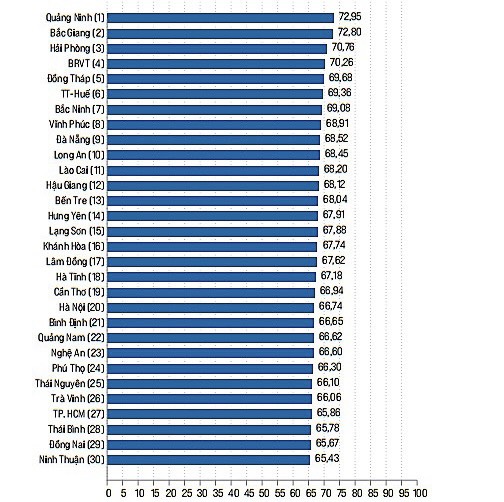The China-led globalization is gradually becoming obsolete. US companies are relocating their factories from China as a result of the US-China trade war and the Covid-19 pandemic.
A.T. Kearney, a global production consulting company, has released its 7th annual Reshoring Index (a measure of the process of moving a business or a portion of businesses based in another country back to the original country), which shows the 7th annual reversal thrilling. US domestic products in 2019 account for a much bigger share than the 14 Asian exporters studied. Products imported from China are the hardest hit.
Last year, companies took the initiative to reconsider their supply chains by persuading Chinese partners to relocate their factories to Southeast Asia to avoid tariffs or to completely replace supplies from China.
“Three decades ago, US manufacturers started producing and sourcing in China for one reason: low cost. The trade war brought a second aspect to balance the problem. It is a risk that tariffs and the threat of Chinese imports of imported goods are disrupted, and that companies must put the risks on the balance sheet and the cost benefits. 19 brings a third aspect for the first time to appear, and more fully: resilience (the ability to predict and adapt to unforeseen system shocks), “according to Patrick Van den Bossche, The author of Kearney Report shared.
The major beneficiaries in this are Southeast Asian countries, led by Vietnam. And through the US-Mexico-Canada Agreement (USMCA), Mexico will become the preferred source of supply in the Americas.
By 2020, the trade war seems to be on hold. Sadly, it gave way to a global pandemic originating in Hubei Province, China. Covid-19 has almost shut down Western economies and created a nightmare in China.
Not only that, companies could not get direct supply in February and early March because Chinese factories closed, causing businesses in the United States to be delayed.
As China began to recover and restore the economy, the United States was defeated by Covid-19 due to the rapid spread of the virus. Even as China is recovering, the United States is still trapped in the quagmire of disease.
The Kearney Report predicts that companies will be forced to take further steps into their own sourcing plans.
Kearney’s China Diversification Index (CDI) tracks the change in imports of US processed goods from China and other Asian countries. China is still the leading country, but it has lost its market share during Trump’s years as President of the United States.
In 2013 (the base year of the CDI report), China held 67% of all manufactured goods of Asian origin in the United States. By the second quarter of 2019, this country only accounted for 56%.
Of the US $ 31 billion of US imports that have left China, about 46% have been replaced by Vietnam, sometimes by Chinese manufacturers themselves but from mainland China. Vietnam exported an additional $ 14 billion worth of processed goods to the United States in 2019 compared to 2018 due to this change.
This year, Kearney launches near and far trade rates (NTFR). This ratio tracks the movement of US imports to production areas near Mexico.
Since 2013, NTFR has fluctuated between 36% and 38%, which means that for every dollar of processed goods from Asia, there is about $ 37 in processed goods imported from Mexico.
That changed after the USMCA Agreement was signed. Based on the dollar value, total production imports from Mexico to the US increased by 10% between 2017 and 2018, from $ 278 billion to $ 307 billion, and an additional 4% from 2018 to 2019, with a total import value of $ 320 billion, based on the Kearney report.
“The door to these rebels has been clearly opened by the ongoing trade disputes in the United States, because the interests of these countries mainly come from the types of products affected by tariffs. “, Yuri Castano, director of Kearney said. “Clearly, the trade war has caused US companies to start considering and reshaping their supply networks.”


